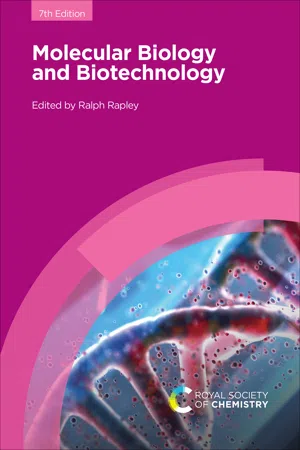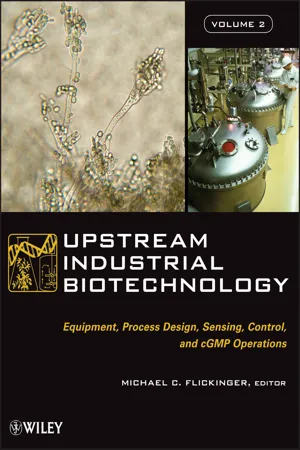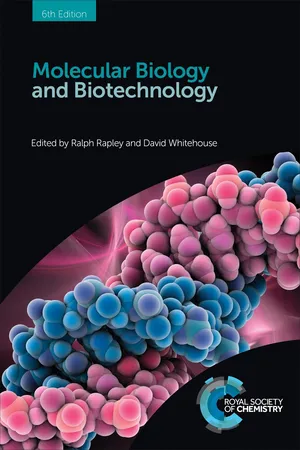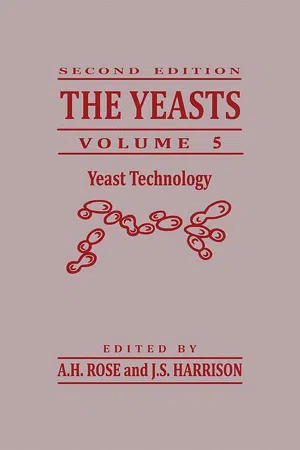Biological Sciences
Yeast Artificial Chromosome (YAC)
A Yeast Artificial Chromosome (YAC) is a vector used to clone DNA fragments in yeast cells. It contains the essential elements for replication, segregation, and stability of large DNA inserts. YACs are valuable tools for studying and manipulating large DNA sequences, such as those found in eukaryotic genomes.
Written by Perlego with AI-assistance
Related key terms
Related key terms
1 of 4
Related key terms
1 of 3
4 Key excerpts on "Yeast Artificial Chromosome (YAC)"
- eBook - ePub
- Ralph Rapley, Ralph Rapley(Authors)
- 2021(Publication Date)
- Royal Society of Chemistry(Publisher)
E. coli . YACs are linear molecules when propagated in yeast but must be circularised by a short DNA sequence between the tips of the telomeres for propagation in bacteria. When used as a cloning vehicle, the YAC is cleaved with restriction enzymes to generate two telomeric arms carrying different yeast-selectable markers. These arms are then ligated to suitably digested DNA fragments, transformed into a yeast host and maintained as a mini chromosome.Figure 6.6Schematic diagram of a YAC cloning vector and its use as a cloning system.YACs have become indispensable tools for mapping complex genomes such as the human genome35because they accommodate much larger fragments of DNA than bacteriophage or cosmid cloning systems, thus simplifying the ordering of the human genome library. The complete library can be contained in approximately 10 000 clones, cutting by a factor of five the number of clones required by other vector systems. However, given the huge capacity and stability of these powerful vectors, YACs have been further developed to address much more than genome analysis. YACs are also used as a chassis in which to engineer sections of heterologous genomes in yeast cells by exploiting the extremely accurate homologous recombination system.6.3.2.2 Manipulating Mammals
Once a YAC has been successfully transformed into a yeast cell, the highly efficient homologous recombination system of S. cerevisiae can be exploited in vivo to manipulate extensively both YAC vector sequences (retrofitting) and their inserts.36For example, homologous recombination can be used to retrofit mammalian-selectable markers into the vector arms and/or introduce specific mutations into any genomic sequence carried in a YAC, thus generating artificial chromosomes that can be used in the production of transgenic mice (see Figure 6.7 ). A linear DNA fragment consisting of neomycin resistance and LYS2 genes sandwiched between the 5′ and 3′ ends of the URA 3 gene can be targeted into the URA - eBook - ePub
- Michael C. Flickinger(Author)
- 2013(Publication Date)
- Wiley(Publisher)
These are linear vectors carrying the essential cis -acting elements of a yeast chromosome and are stably propagated in yeast cells at a low copy number. The components required are a yeast centromere (CEN), an origin of replication (autonomous replicating sequence, ARS) and telomeres (TEL). The vectors also carry a multiple cloning site for the insertion of foreign DNA and selectable markers for stable maintenance (such markers generally restore prototrophy to an auxotrophic yeast strain). Of the various large-capacity vectors developed for use in bacterial and mammalian cells (reviewed in Ref. 11), YAC vectors have many advantages, including their capacity (theoretically up to 2 Mbp, which should enable even the largest mammalian genes to be cloned) and the amenability of yeast for homologous recombination. This allows yeast vector sequences to be replaced by mammalian selectable markers before transfection, a process termed retrofitting. It also allows specific mutations to be introduced into the foreign DNA. Recombinant YAC clones are fragile and subject to shear, but several methods have been developed for their efficient transfection into mammalian cells, including lipofection, fusion with yeast spheroplasts, and microinjection into the pronuclei of fertilized eggs (see later). ES cells have been the predominant targets for YAC transfection, and such techniques yield transgenic mice with at least the same efficiency as obtained using more traditional and smaller transgenes. The generation of YAC transgenic mice is not a trivial process, because recombinant YAC DNA is difficult to purify intact and is highly susceptible to fragmentation once inside the cell. Typically, transgenic animals integrate several YACs, some with terminal deletions reflecting intracellular fragmentation events - eBook - ePub
- Ralph Rapley, David Whitehouse, Ralph Rapley, David Whitehouse(Authors)
- 2015(Publication Date)
- Royal Society of Chemistry(Publisher)
E. coli . YACs are linear molecules when propagated in yeast but must be circularised by a short DNA sequence between the tips of the telomeres for propagation in bacteria. When used as a cloning vehicle, the YAC is cleaved with restriction enzymes to generate two telomeric arms carrying different yeast selectable markers. These arms are then ligated to suitably digested DNA fragments, transformed into a yeast host and maintained as a mini chromosome.Figure 10.6 Schematic diagram of a YAC cloning vector, indicating prokaryotic gene for resistance to amplicillin (AmpR ), prokaryotic replication origin (ori), yeast auxotrophic markers (URA3, TRP1), autonomous replication sequence (ARS), yeast centromere (CEN) and telomeres (TEL).YACs have become indispensable tools for mapping complex genomes such as the human genome35 because they accommodate much larger fragments of DNA than bacteriophage or cosmid cloning systems thus simplifying the ordering of the human genome library. The complete library can be contained in approximately 10 000 clones, cutting by a factor of five the number of clones required by other vector systems. However, given the huge capacity and stability of these powerful vectors, YACs have been further developed to address much more than genome analysis. YACs are also used as a chassis in which to engineer sections of heterologous genomes in yeast cells by exploiting the extremely accurate homologous recombination system.10.3.2.2 Manipulating Mammals. Once a YAC has been successfully transformed into a yeast cell the highly efficient homologous recombination system of S. cerevisiae can be exploited in vivo to extensively manipulate both YAC vector sequences (retrofitting) and their inserts.36 For example, homologous recombination can be used to retrofit mammalian selectable markers into the vector arms and/or introduce specific mutations into any genomic sequence carried in a YAC thus generating artificial chromosomes that can be used in the production of transgenic mice (see Figure 10.7 ). A linear DNA fragment consisting of neomycin resistance and LYS2 genes sandwiched between the 5′ and 3′ ends of the URA 3 gene can be targeted into the URA3 - eBook - ePub
The Yeasts
Yeast Technology
- Anthony H. Rose, J. Stewart Harrison(Authors)
- 2012(Publication Date)
- Academic Press(Publisher)
Hinchliffe and Vakeria, 1989 ).B Vectors
A variety of yeast vectors are available. These include integrative vectors, which require recombination with the host genome for their maintenance, and autonomously replicating plasmid vectors. The latter group can be subdivided into: (i) 2 μm circle-based plasmids; (ii) autonomously replicating sequences (ARSs) derived from the chromosome in Sacch . cerevisiae (Williamson, 1985 ); and (iii) centromeric (CEN) plasmids, which consist of an ARS element and chromosomal centromere.All vectors tend to be used as shuttle vectors in that they are capable of selection and maintenance in both yeast and E . coli . However, each class of vector has a different set of properties which suit its use for a specific task. Within the context of high-level gene expression, it is appropriate to consider integrative and 2 μm circle-based vectors, since these afford a high degree of inheritable stability and high gene dosage, respectively, both of which are prerequisites for efficient gene expression.1 Integrative vectors
Simple integrative vectors have been available since the earliest demonstration of yeast transformation (Hinnen et al. , 1978). These usually consist of the vector pBR322 coupled to a yeast gene, for example URA3 (Scherer and Davies, 1979 ). Since they do not contain DNA sequences that function as an origin of replication, successful transformation requires integration by recombination with homologous DNA sequences in the yeast genome. Integration occurs by a single cross-over between the circular vector and the chromosome, generating a duplication of DNA homology flanking the vector DNA sequences. The frequency of integration is approximately 1–10 transformants per microgram of DNA, using this procedure. However, this can be increased substantially (50–3000-fold) by delineating the vector prior to transformation (Orr-Weaver et al. , 1981). Cleavage with a restriction endonuclease in the region of chromosomal DNA homology results in recombinogenic DNA which is efficiently targeted to integrate at homologous chromosomal loci (Orr-Weaver et al.
Index pages curate the most relevant extracts from our library of academic textbooks. They’ve been created using an in-house natural language model (NLM), each adding context and meaning to key research topics.
Explore more topic indexes
Explore more topic indexes
1 of 6
Explore more topic indexes
1 of 4



